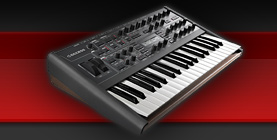

|
|||||||
| General discussion about Access Virus Discussion about Virus A, B, C and TI. |
|
|
Thread Tools | Search this Thread | Display Modes |
|
#16
|
|||
|
|||
|
I personally think yes, a lot of the more powerful graphics cards could run multiple instances of mega-synths and FX. Actually three or four years ago I thought this would have been farther along than it is. In truth though, I know very little about the CUDA SDK and I've read it is cumbersome and difficult to program against. I think NVidia would really need to find ways to make audio applications easier to create, although I say all of this without even having taken a close look at CUDA from a programming standpoint (pure speculation).
There is a big disparity in the amount of power across cards. The one I mentioned in this PC (gtx690) is a monster, extremely powerful dual GPU card.. the one I have in my actual music PC is a much more modest low end card (gts450), so there would be a big difference in music making potential of each of those, just as there is a big difference in gaming performance. I'm not sure about any aspect of GPUs being 32 bit though, or at least not sure what that might refer to, specifically. The bus on some of these NVidia Kepler-based graphics cards is 256 or 256 x 2 in the case of dual GPU cards, and of course both 32 and 64 bit drivers are created for them. However, I'm sorry to say I'm not holding my breath, because CUDA technology has been available for this type of use for 4-5 years now. The graphics cards have gotten phenomenally faster and more efficient in power usage, however utilization of them for anything but graphics seems to be at a snails pace. It is promising to see these reverb plug-ins making progress in their development. Reverb is a really CPU-gobbling and commonly used effect.. in fact probably if there was one I would identify to offload to a secondary processing mechanism, that would be the one. |
«
Previous Thread
|
Next Thread
»
| Thread Tools | Search this Thread |
| Display Modes | |
|
|
All times are GMT. The time now is 05:24 PM.
Powered by vBulletin® Version 3.6.4
Copyright ©2000 - 2025, Jelsoft Enterprises Ltd.
Skin Designed by: Talk vBulletin
Copyright ©2000 - 2025, Jelsoft Enterprises Ltd.
Skin Designed by: Talk vBulletin
 |
 |









 Threaded Mode
Threaded Mode